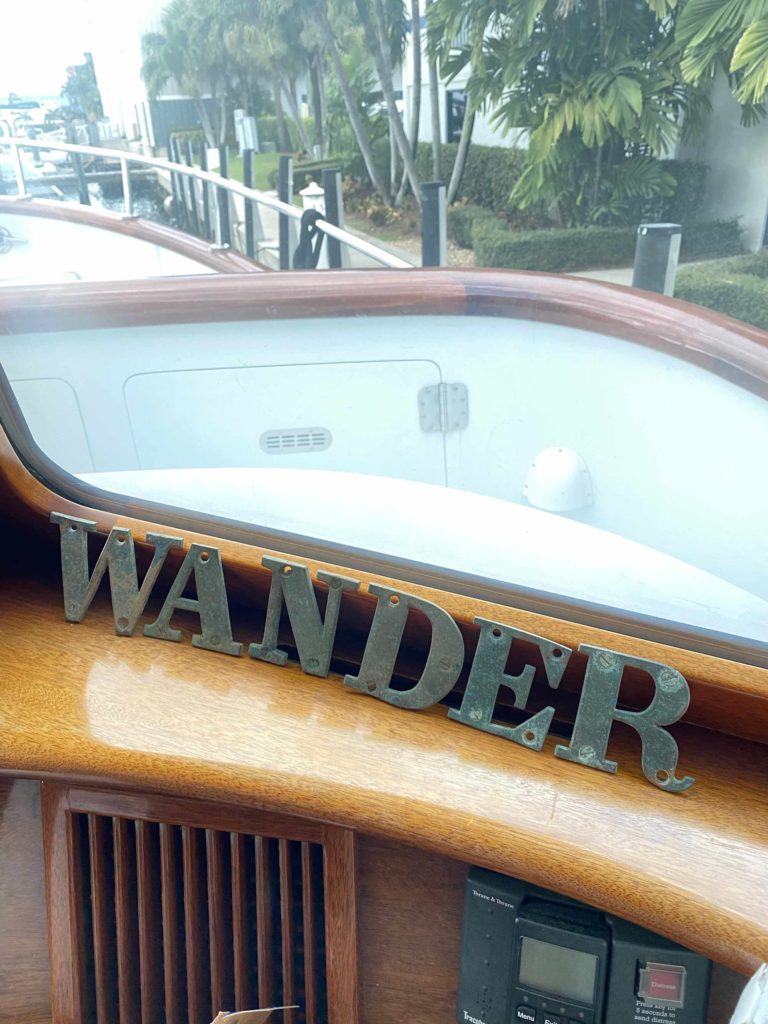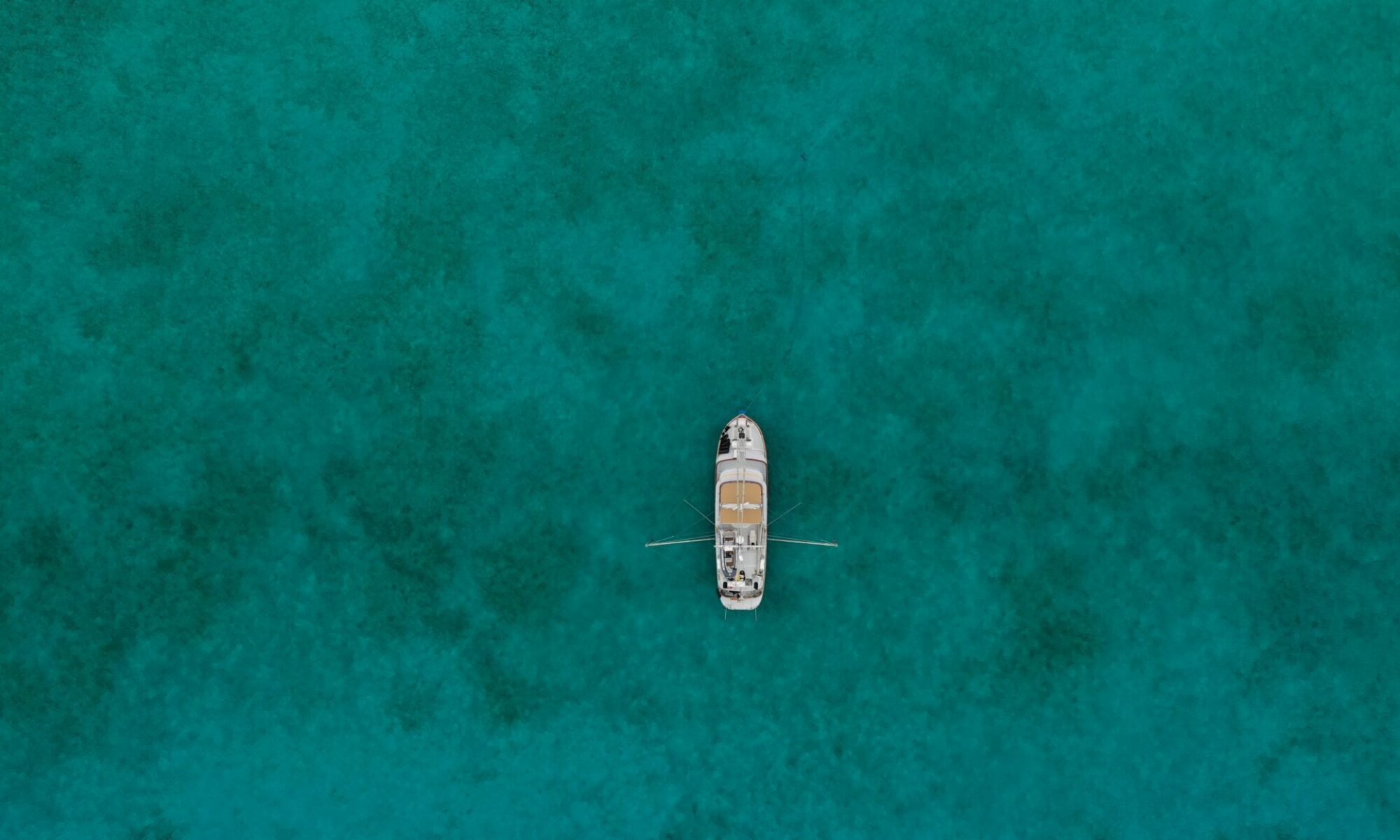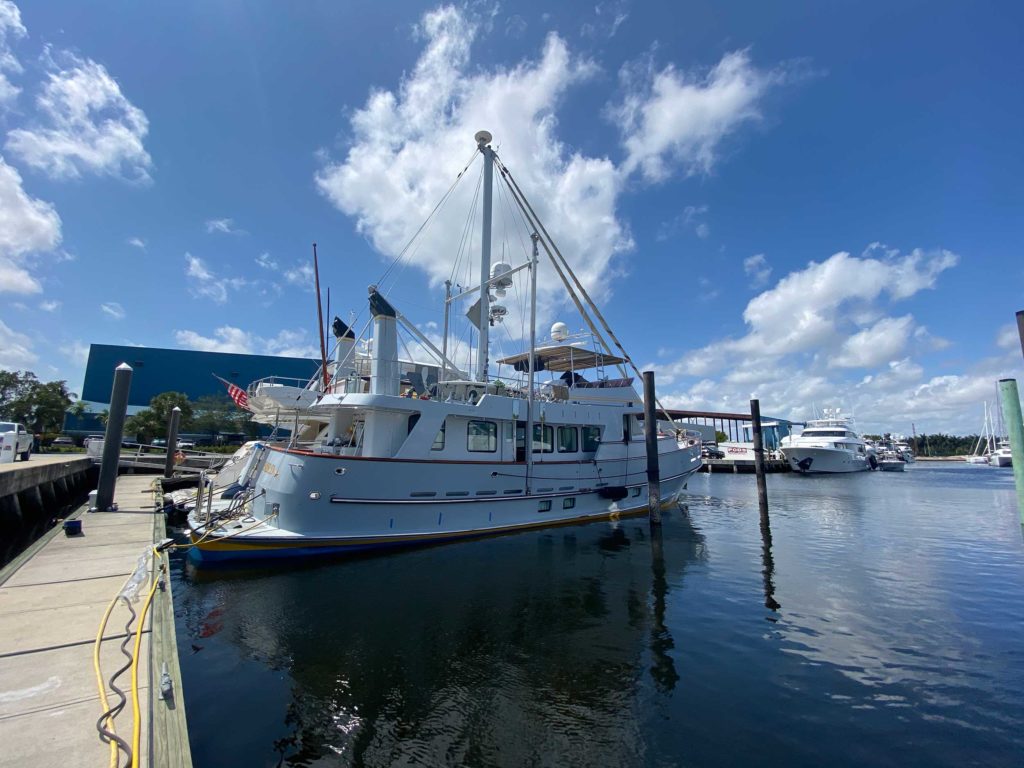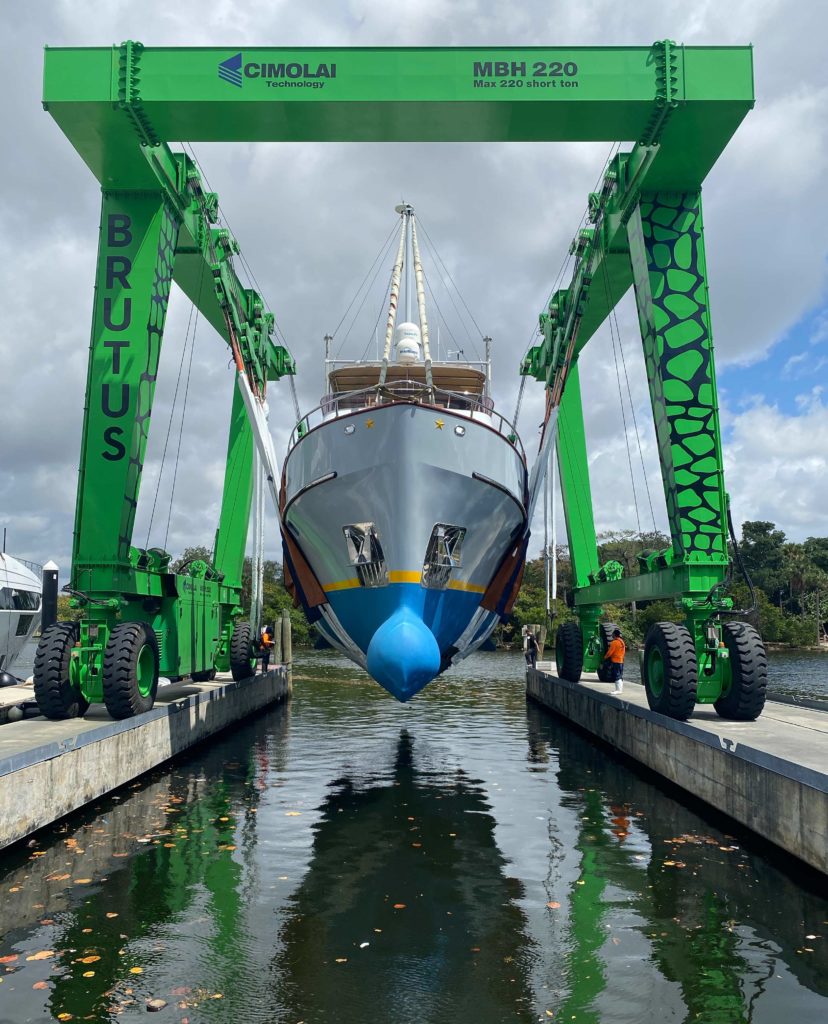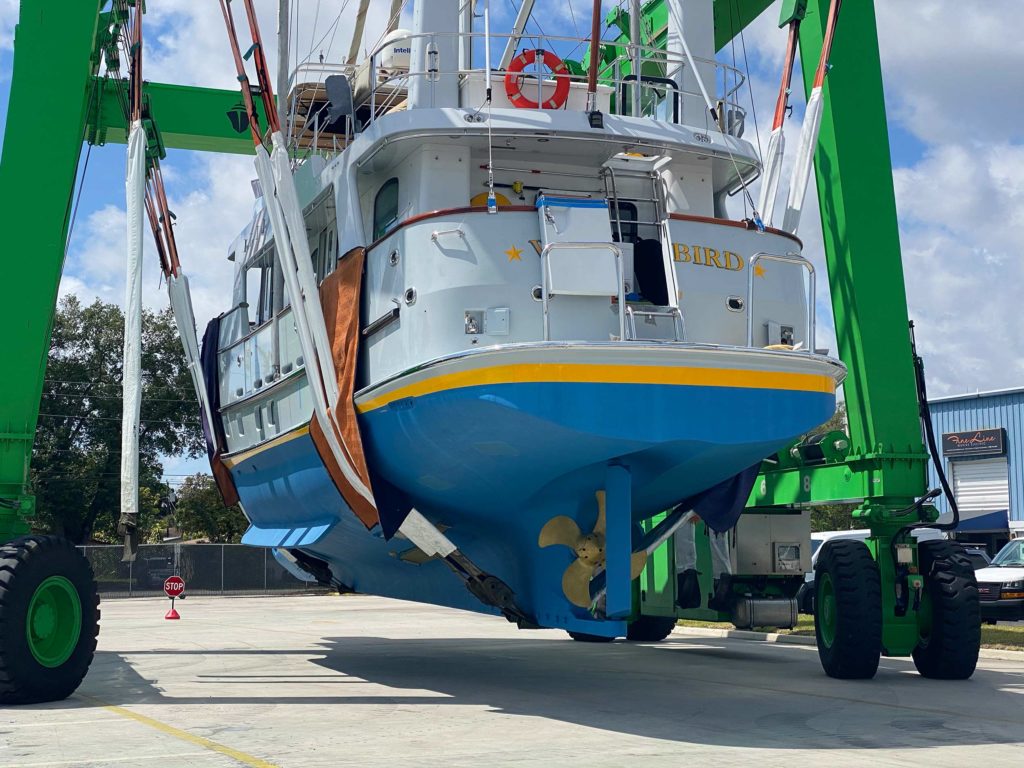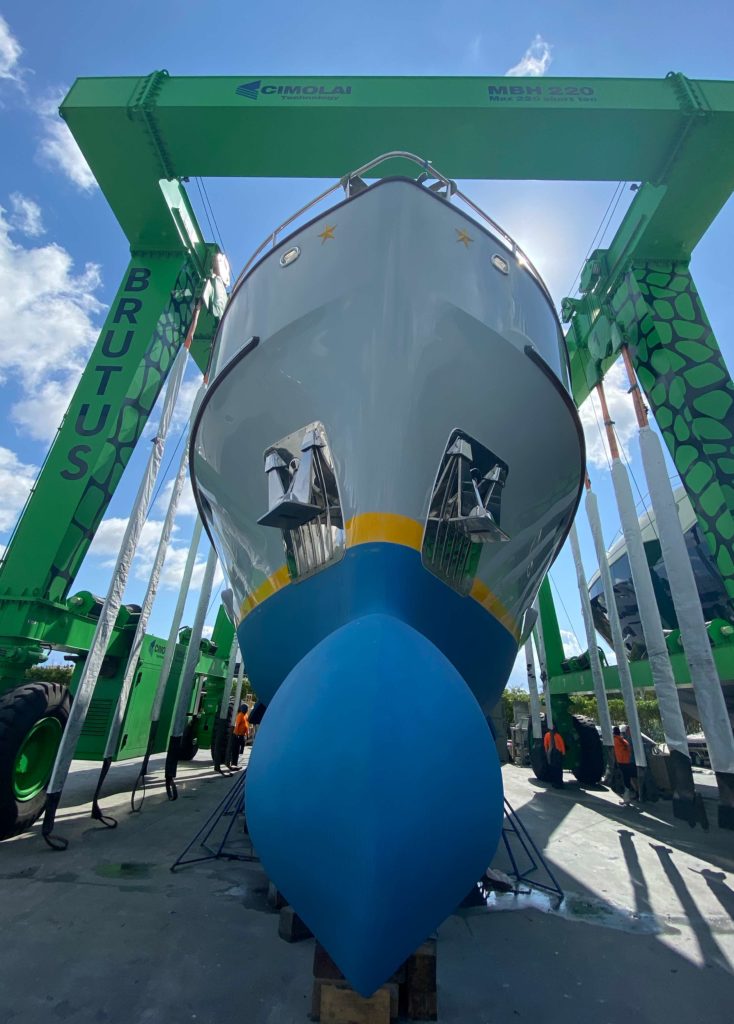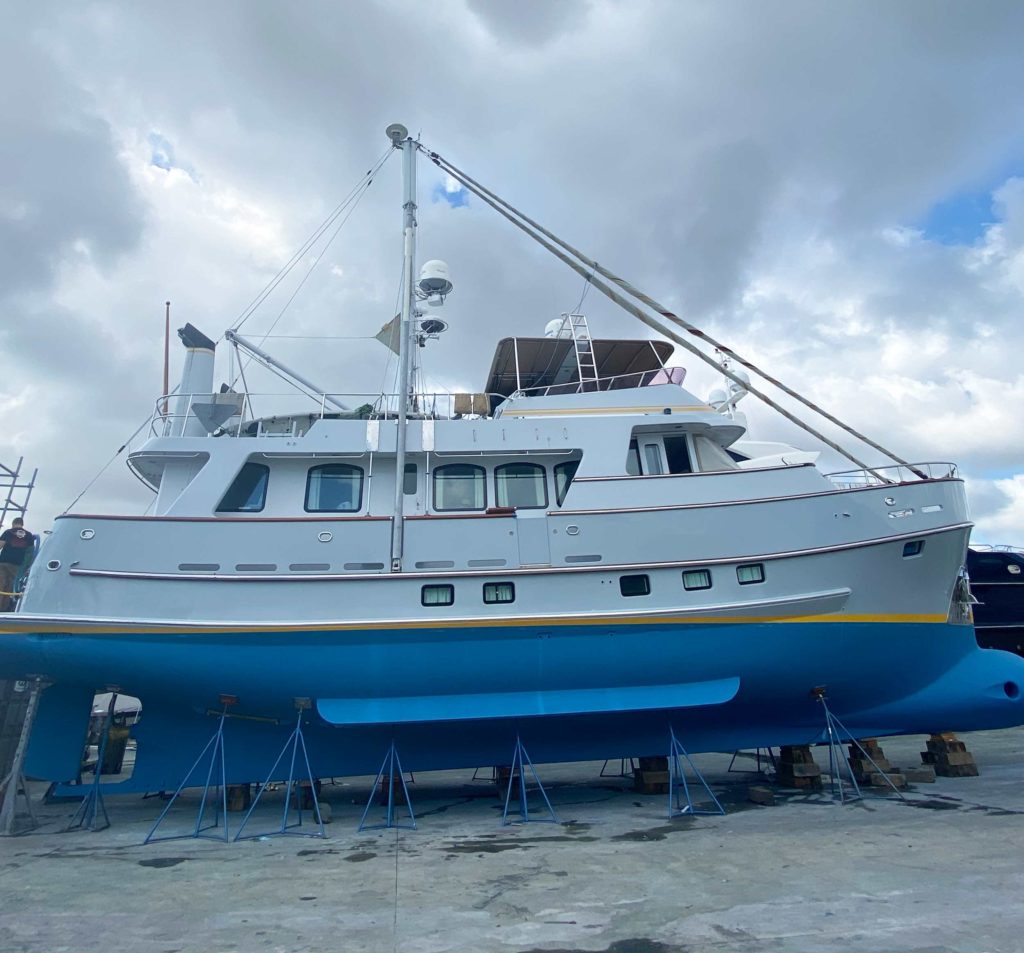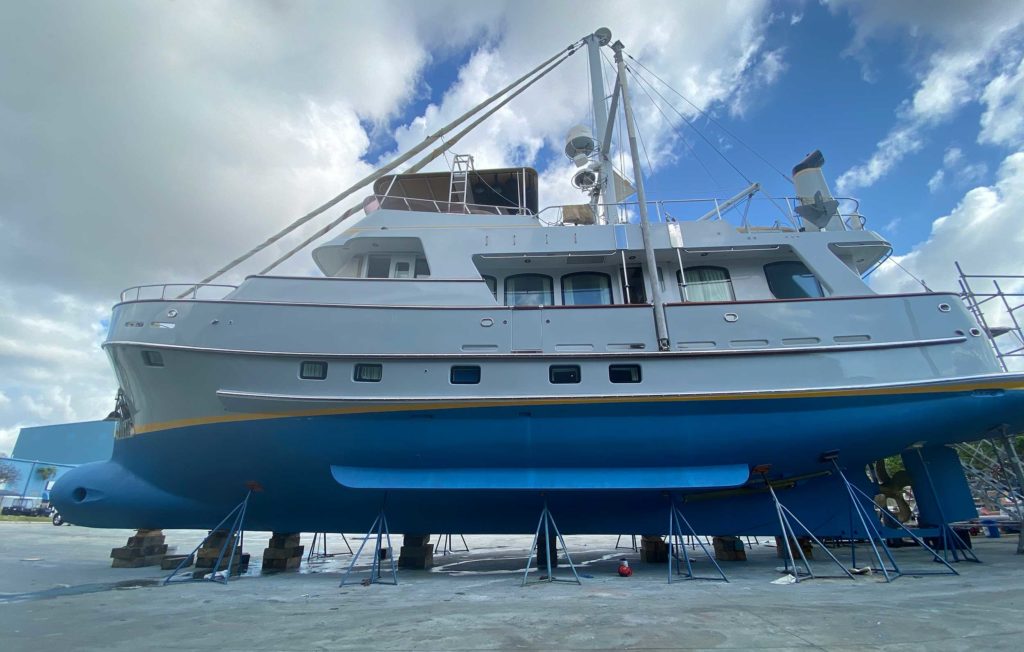A boat’s pedigree typically refers to the yard where it was built and the craftsman and artisans who contributed. There may also be predecessors: namesake vessels who came before. The Wanderbird has a rich lineage in the namesake of the Wandervogel, translated to Wanderbird and also known as No. 5 Elbe.
The No. 5 Elbe was built by Gustav Junge in 1883. It served for 41 years as a pilot schooner before it was sold in the 1920s to American journalist Warwick Tompkins. Tompkins made several transatlantic passages with the renamed Wander Bird before he moved to the San Francisco Bay Area. In the 1930s, the Tompkins family sailed the Wander Bird around Cape Horn — going the “wrong way” from east to west. He later chartered the boat for trips to the South Sea islands.
Pilot Schooner No. 5, Old Salt Blog
The schooner was struck by a freighter and sank in Hamburg and has since be righted and shipped to Denmark for repair.
George Baker spent more than 5 years planning and building the Trawler Wanderbird. He had a unique vision of an ultra-efficient, 65 foot boat, able to travel the world with the assistance of headsails. As we’ve learned about the history, we have come across others whose stories are intertwined.
Once, while anchored in the Exuma islands, a small craft approached and a man named Stephen announced he had worked on the boat when it was built. Imagine that, thousands of miles from where it was constructed, off a remote island! A week later we helped the Navyman-turned-captain-turned-biologist catch and tag sea turtles for research.
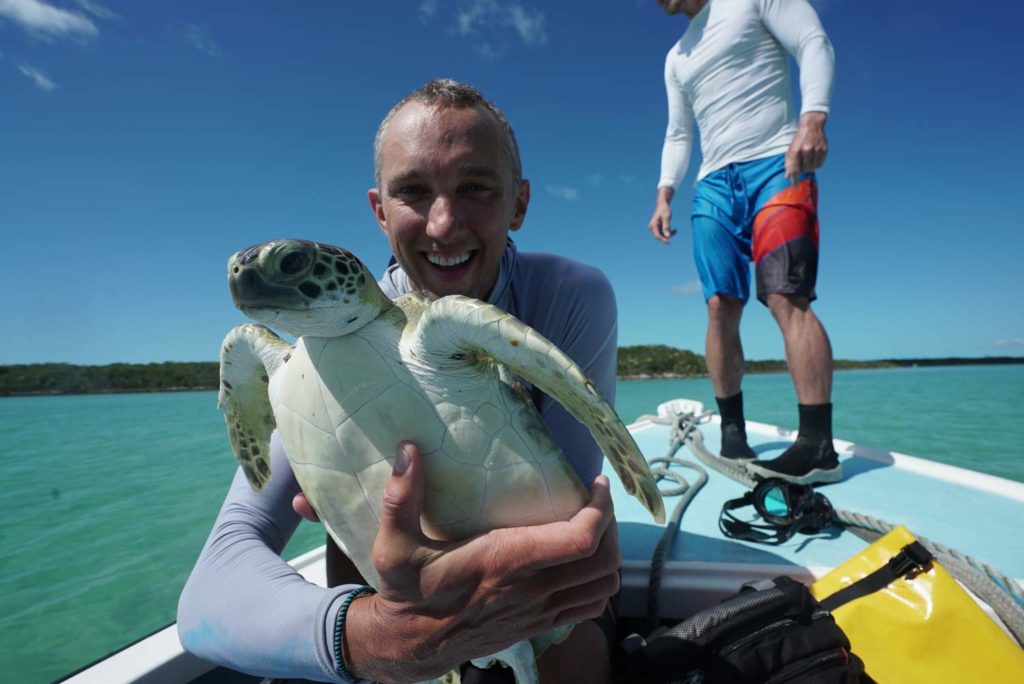
I recently had an email exchange with Brooks Townes in Port Townsend who worked on an earlier refit of the Elbe. He tells me that there seems to be a robust demand for the necessary type of Oak used in her hull.
Had lunch while back with a group of international wooden vessel restorers who expressed concern for the yard in Denmark’s ability to locate the proper oak for her repairs as the same hard European oak is being gobbled by the restoration of the Notre Dame Cathedral in Paris. Personally I’m not sure how pure they need to be in using the same oak. There’s plenty of suitable purple heart about if they can veer a bit. (The yard, we’re told, used up its considerable hoard of the right oak in the schooner’s earlier restoration.)
From Brooks’ correspondence
Brooks sent along a photo of this print he recovered from the bilge of the Elbe.
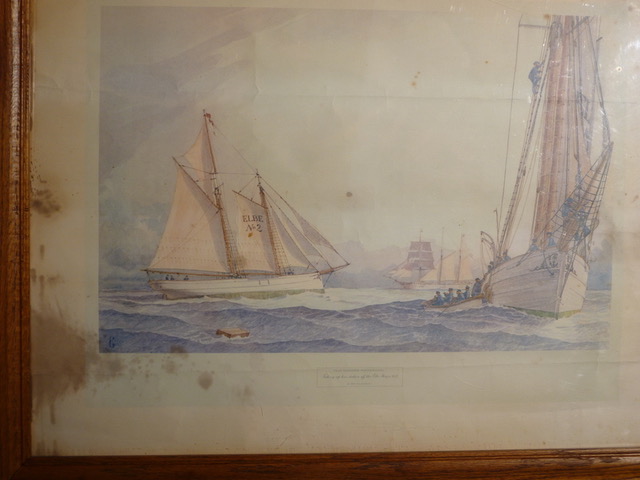
While reading the comments section on the an article about the sinking of Elbe No 5, I came across a post.
I live next door to the house that Hal Sommer lived in before his death. It’s a long story but I have the original bronze metal lettering WANDER _ _ RD. I am not sure what to do with them other than donate them to the Sausalito Historical Society. Unless someone else has a better idea.
Steve Fabes, Commented on the Sinking of Wander Bird article
After some email exchange Steve promptly shipped the letters he was able to recover. Presumably, these bronze letters adorned the stern of the wooden schooner as she sailed around Cape Horn in 1936 and criss-crossed the seas in many voyages. More recent photos from the 50’s show different lettering so I suspect these were removed in the bay area prior to Hayden Sterling’s ownership. It was at that time when the actor announced to his makeshift crew that they were bound for Tahiti, rather than Santa Barbara as planned. I suppose it’s possible the letters were mounted elsewhere. Perhaps someone will come forward with additional information!
Thankfully Steve had the foresight to collect and preserve them as they’ll make quite the historical centerpiece – ideally if we find a fine arts painter who could create a piece for the main saloon, we thought we could incorporate the letters into a custom frame.
